Paul Lawrie reflects on his life in golf
Published: Last updated:
As Paul Lawrie retires from the European Tour, we delved into the Golf World archives to republish the 1999 Open Champion’s ‘Perspectives’ interview in which the Scotsman sat down with John Huggan to reflect on his life and his phenomenal career at golf’s top table.
When I first became a club pro at Banchory Golf Club, my boss at the time entered me into a ‘beat the pro’ competition against the members. I shot 80-something and only beat four guys. I was mortified and thought I was going to be sacked. But my boss sat me down and told me to get practising. From then on I hit balls every chance I got. I never wanted to feel that embarrassment again.

I was a five-handicapper at that point, but not for long. The norm for me was to hit 1,000 balls per day. Before work. At lunch. After work. Every single day. Hitting balls. I had no social life. My life was golf. And I got better pretty quickly. I won my first event, six weeks after I turned pro.
RELATED: The new World Handicap System explained
My amateur ‘career’ was pretty much non-existent. I was never good enough to play in the national events and I was never capped for Scotland at any level, unlike my son, Michael, who has played for the Scottish Boys team. All I can say is that I won the Meldrum Men’s Open. And no, I can’t remember what I shot. But it’s viewed as a major in the Aberdeen area (laughs).
I was in Gothenburg in 1983 when Aberdeen won the UEFA Cup Winners’ Cup. I was 14 and went with my dad and my brother. We were in the stand at the end where John Hewitt scored the winning goal. It was pouring with rain. But seeing the legend that is Willie Miller lifting the trophy is still one of the most memorable moments of my life.

I grew up in Kemnay near Aberdeen. There was a flat area where my mother used to hang out the washing, I’d chip into the ‘whirlie’ on which she hung out clothes and hit balls into the field behind the house. Years later, that ground become a driving range called ‘Pine Lodge’. When the new owner first cut the grass he found 3,000 balls out there. All of them hit by me with my Kel Nagle 5-wood. I’ve been back since and it’s about a 9-iron distance for me now.
RELATED: Which Wilson iron is right for you?
I first met Sir Alex Ferguson at the Sports Personality of the Year awards in 1999. I was sitting with Nick Faldo and Monty when Fergie came on stage with the Manchester United players. They were the ‘Team of the Year.’ Monty asked if I knew Alex, who had written me a lovely letter after I won The Open. But we had never met. And so Monty introduced us. Ever since then we have kept in touch. Sir Alex has been a great friend. He loves his golf and plays off maybe an 18-handicap.
As I’ve grown older, I’ve become embarrassingly emotional. I was recently honoured with a ‘lifetime achievement’ award in Glasgow. During the ceremony, there was a video tribute from Jack Nicklaus. Combine that with me talking about my wife, Marian, and I got more than a little emotional. I never used to be like that. But as I’ve gotten older, I ‘greet’ (cry) at films and all sorts. Someone winning something really gets me – even someone I don’t know – I start ‘bubbling’ (crying). It’s so embarrassing.
Jack Nicklaus left me speechless and in tears. In his video to me, Jack mentioned the clinching 4-iron I hit to the last green at Carnoustie when I won the Open. That struck a chord with me. Walking through the clubhouse at Medinah at the 1999 US PGA, I bumped into Jack. He stopped, shook my hand and told me that shot was one of the best he had ever seen under pressure. Then he walked on. I was speechless. And in tears.
Jack or Tiger? That’s easy. A lot of people in golf think Tiger Woods is the best player of all time. But for me it is Nicklaus. He has the most major victories. Simple. And just as important is the fact that Jack has been such a great ‘loser’. That is the mark of the man. He is just class.
RELATED: How Tiger Woods changed the game of golf
My relationship with America has sometimes been portrayed as a bit complicated. But I don’t think it is. When I went there first, my sons were small and I hated being away for three or four weeks at a time. I couldn’t get home every Sunday night for the first time. Throw in the fact that the Americans kept getting my name wrong – they called me “Lowry” – and I began to take a dislike to being there. I felt that was very disrespectful given that I had just won the biggest event in golf. I don’t hate being in America, but six or seven weeks a year is enough for me.
When I hit 50 on January 1 next year, I’ll have a decision to make. I have a full year exemption on the Champions Tour because of my Open victory. So I will go early in ’19 and see how I get on. Marian is keen to travel too, which is key for me. When I played over there in the past I often went on my own so it was lonely. Hopefully, I’ll enjoy it more with Marian beside me.

My junior golf foundation in the North East of Scotland has been hugely successful and is something I am very proud of. I actually wanted to start it much earlier, when I first got my European Tour card, but put it off because I felt people might not really know who I was. As soon as I won The Open though, we launched it. Within a few years it had grown enormously and it continues to do so. I just wanted to put something back into the game that has given me so much. It has been very rewarding. We have helped about 25,000 youngsters get started in golf.
My left foot is a problem. It’s been an issue over the last few years. I first felt it during the 2012 Ryder Cup at Medinah. I got to the stage that I couldn’t play more than a couple of weeks in a row. I certainly couldn’t hit proper shots off downhill lies. My foot couldn’t hold my weight. José Maria Olazabal recommended I see a doctor in Munich. I spent a week there at the end of 2017. I must have had 40 injections in my back and feet every day. I actually had a herniated disc. Things are better now. But I won’t know for sure until I play a few weeks in a row.
RELATED: Phil Kenyon saves you six shots per round!
For a while, it seemed a lot of things written about me were either not quite right or completely wrong. It was annoying. Plus, I thought I had a story to tell, a pretty good story. Not many guys turn pro at age 17 with a handicap of five and go on to win The Open. Even when I wrote my autobiography I heard people say, ‘More money for Lawrie’.
I’d like it on the record that writing that book actually cost me money. I paid the ghostwriter myself. All the books we bought from the publisher have been sold, with all the money going to the foundation. How people think I can make money doing all that I’m not quite sure. And it wasn’t an ego thing, either. It was a good story and I wanted to put the record straight on a few things.

Winning The Open made me depressed. The reaction to my Open win was a problem for me. I’d be on the phone to Adam (Hunter) four or five times a day. It was all about Van de Velde, or that’s what it seemed like to me. Then I started messing around with my clubs. I went from never changing my equipment to sorting through 25 sets trying to find ‘the answer.’ I got in such a muddle, which is not the way I am. It was no wonder I became depressed.
I kept my depression secret. Only me, my wife, my best mate and the doctor knew what I was going through. Even my mother didn’t know. She wasn’t best pleased when she read about my depression in my book either. But I didn’t want people to know at the time. And it wasn’t such a bad bout; it lasted only a few weeks then I moved on.
The 67 I shot to win the Open in ’99 is not the best round I ever played. It was obviously a pretty good effort on such a tough course and under those circumstances, but for me, my best effort was shooting six-under par for the 15-holes I needed to beat Brandt Snedeker in the 2012 Ryder Cup at Medinah. I was number five in the singles order and knew I had to win. I’ve never been so nervous standing on a first tee. So to shoot the best figures of the day on either side was a pretty good effort.

The 2012 Ryder Cup was a weird experience. I’d been out of it for 13 years. So even though I knew all the players, I hadn’t spent a lot of time with maybe half of them. They were in America and I was in Europe. But the whole week was amazing. It doesn’t get any better than coming back from 10-6 down to win. The Americans were desperate to win and played great for the first two days. But the third day was easily the most fun I’ve ever had on a golf course. It was magnificent.
RELATED: Padraig Harrington: “My regrets, redemption and the Ryder Cup”
The press conference at the end of that Ryder Cup was hilarious. We were all drunk. Champagne and beer on empty stomachs meant we were well gone by the time we sat down to talk to the media. Graeme McDowell was sitting next to me and fell asleep. I had to wake him up to answer a question.
That night was pretty wild. For some more than others. We had a great time, as you can imagine. I’m not a big party guy but I made it to about 2am. Some guys never got to their beds at all. Nicolas Colsaerts and Martin Kaymer were the last men standing, apparently. I saw Martin on the plane the next morning. He was in a bit
of a state at 8am (laughs). Which is fair enough. It really doesn’t get any better than winning the Ryder Cup on American soil.

Everyone wanted to come up and say, ‘Well done’ after that Ryder Cup. I had countless Tour players approach me to say, ‘Congratulations’ – even guys who I didn’t normally have much to do with or who I normally just said ‘hello’ to. That was really nice. In all honesty, I expected something similar after I won The Open at Carnoustie back in ’99. But it never happened, probably because of Jean Van de Velde’s triple-bogey on the final hole. But that changed. And I have changed, too. I’m a lot more at ease and at peace with all that goes on around me. I feel more confident too. I have more self-belief now, both on and off the golf course.
My nickname on Tour for a long time was ‘patience’. Why? Because I didn’t have any. I’m way better now in that respect. A few years ago, a couple of missed cuts in a row would have had me seriously worried and impatient with my game. That’s not the case at all now, though. All because I have a good feeling about myself. That is a massive change from where I was.
RELATED: The world’s best golfers share their strategy tips
My late coach Adam Hunter was right all along. He always told me to work only on rhythm at tournaments; the technical stuff could all be done at home. That way, I could focus on that one thing and forget the odd poor shot along the way. If I had listened to him at first, I’d have been the player I have become years ago. I’m sad that it took until after he was gone for me to know all of that.
I haven’t had a technical thought in my head for more than two years. Nowadays, all I work on is rhythm and the speed of my swing. When I hit a poor shot, it’s invariably when I lose that rhythm, becoming either too fast or too slow. All I do now is pick my target and concentrate on ‘slow away’ and ‘fast at the ball.’ It’s really that simple.

I definitely don’t hit 1,000 balls a day any more. Even on a week at home I’m lucky if I hit 100 balls a day. But I’ll always spend at least 90 minutes on my short game and some time putting at home. Once a player gets their swing to the certain level that they need, it just needs to be maintained. That doesn’t mean hitting hundreds of balls. Plus, at my time of life, my swing isn’t going to change much anyway, no matter how hard I work on it. Throw in the fact that the problem I have with my foot precludes me practising too long anyway and I have what seems to be the perfect formula for me.
Rory McIlroy gave my confidence a nice little boost at the 2012 Ryder Cup. We were sat next to each other at the closing ceremony and all of the guys were joking around and saying that my boys would now think I’m cool. I didn’t think so, but Rory piped up and said they should, “because their dad is pretty cool”. I was very flattered. When one of the best players in the world says something like that, it’s pretty nice.
RELATED: How Rory McIlroy chooses his golf clubs
The biggest difference in golf these days is the difference between 50 and 51 in the Official World Ranking. If you’re in the world’s top-50 you’re in everything for sure. Just one place lower and you’re guaranteed nothing. I’ve been in 51st place at the end of the season a couple of times and it’s just a horrible spot to be in.

I always struggled when it came to playing alongside Monty. I still do. I was drawn with him in Durban a few years back. I had driven the ball really well for the previous two seasons basically. Yet I hit one tee shot there that must have been 60 yards right. It was the worst shot I’d hit for about 10 years. And I know he was judging me, thinking, ‘Man, how bad was that?’ I don’t know why I struggled with Monty so much. It’s a strange thing.
READ NEXT: Meghan MacLaren: “Sophia Popov has given us all hope”
-
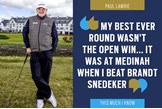 Paul Lawrie at Carnoustie, the scene of his 1999 Open win.
Paul Lawrie at Carnoustie, the scene of his 1999 Open win.
-
 Paul Lawrie hits his final tee shot on the European Tour.
Paul Lawrie hits his final tee shot on the European Tour.
-
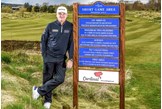 Paul Lawrie at his golf foundation.
Paul Lawrie at his golf foundation.
-
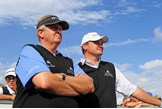 Paul Lawrie always struggled when playing with Colin Montgomerie.
Paul Lawrie always struggled when playing with Colin Montgomerie.
-
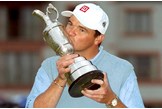 Paul Lawrie with the Claret Jug after winning The Open in 1999.
Paul Lawrie with the Claret Jug after winning The Open in 1999.
-
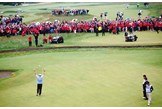 Paul Lawrie celebrates winning The open at Carnoustie in 1999.
Paul Lawrie celebrates winning The open at Carnoustie in 1999.
-
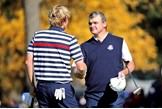 Paul Lawrie beat Brandt Snedeker at the 2012 Ryder Cup.
Paul Lawrie beat Brandt Snedeker at the 2012 Ryder Cup.
-
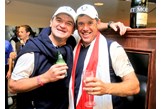 Paul Lawrie and Lee Westwood celebrate the Miracle at Medinah.
Paul Lawrie and Lee Westwood celebrate the Miracle at Medinah.
-
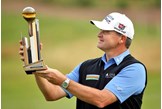 Paul Lawrie's last European Tour win came at the 2012 Johnnie Walker Championship at Gleneagles.
Paul Lawrie's last European Tour win came at the 2012 Johnnie Walker Championship at Gleneagles.
